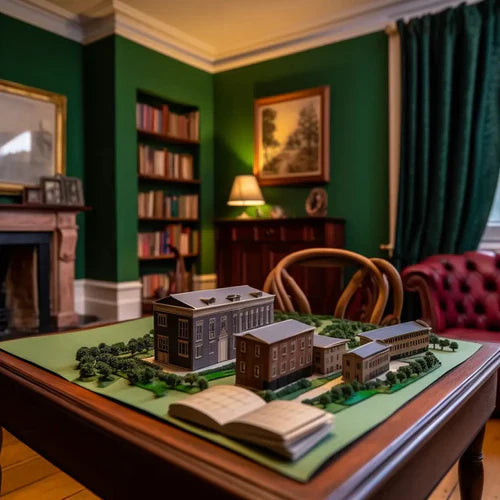
What glues to use for a book nook or other wooden miniature
- Wood Glue Basics
- Ideal Glues for Book Nooks
- Glue Selection Guide
- Application Techniques
- Tips and Common Mistakes to Avoid
- FAQ
Book nooks are a popular form of miniature art that allows creators to replicate real or fictional scenes on a small scale. The materials and tools used to build a book nook can vary significantly, but one of the most important elements is the glue. There are many different types of glue that can be used for book nooks, each with its own advantages and disadvantages.
The goal of this article is to help you choose the best glue for your wooden book nook projects by providing detailed information on the various available options, their specific applications, as well as practical tips to ensure that your creations are both durable and aesthetically pleasing.
Wood Glue Basics
When it comes to creating book nooks and other wooden miniatures, glue choice is crucial not only for assembly but also for the longevity of the artwork. Understanding the fundamental properties of wood glues is the first step in making the right choice.
Essential Properties
Setting Time: Setting time refers to the amount of time the glue needs to remain under pressure before forming an initial bond strong enough to hold the pieces together without support. This time varies greatly between fast-setting glues, like cyanoacrylates, which can set within seconds, and epoxies or PVAs, which may require several hours.
Strength: Glue strength refers to its ability to withstand loads and stresses without breaking. For book nooks, where the structure can be intricate and detailed, it's essential to choose a glue that offers sufficient strength to reliably hold the pieces together over time.
Flexibility: Flexibility is important, especially in environments prone to temperature and humidity variations, which can cause wood expansion and contraction. Some flexibility allows the glue to adapt to these changes without cracking or giving way.
Best Glues for Book Nook Kits
PVA Glues
Firstly, there's PVA (polyvinyl acetate) glue. This glue is commonly used for DIY and craft projects due to its ease of use and affordable cost. It's also transparent once dry, making it ideal for applications where discretion is desirable. However, it's not very water-resistant and can be affected by heat and humidity.

Superglue
Next, there's cyanoacrylate glue, more commonly known as "super glue" or "superglue." This glue is known for its strong adhesion and quick drying time. It's also water and heat-resistant, making it a popular choice for modeling and crafting projects. However, it's important to note that it can be toxic and should be used with caution.
Epoxy Glues
There's also epoxy glue, which is highly popular for DIY and modeling projects. It's known for its strong adhesion and resistance to water and heat. It can also be used to reinforce fragile pieces or to fill in cracks and crevices. However, it's important to note that epoxy glue requires mixing and curing time before use.
Hot Glue Guns
Hot glue guns can be useful for quick and temporary applications, offering immediate adhesion with less precision than liquid glues. While less durable and long-lasting, they can be convenient for temporarily securing elements in place during the complex assembly of a book nook.
Transparent Liquid Glues (Such as UHU)
Transparent liquid glues are extremely versatile and provide a discreet solution for wooden miniatures. Their transparency after drying is a major advantage for visible areas of the book nook. Brands like UHU offer liquid glues that combine strong adhesion with an almost invisible finish, which is ideal for delicate details and aesthetic finishes.
Specific Wood Glues
These glues, specially formulated for wood, combine flexibility and strong adhesion, lending themselves well to mechanical stresses and environmental variations. They are designed to meet the specific needs of wood projects, making assemblies both strong and durable over time.






